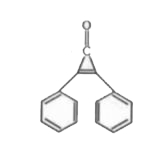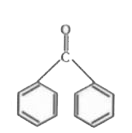Out of CS2 and OCS which have higher dipole moment and why?
To determine which compound, CS₂ (carbon disulfide) or OCS (carbonyl sulfide), has a higher dipole moment, we can analyze their molecular structures and the electronegativities of the atoms involved.
1. Identify the Molecular Structures:
- CS₂ has a linear structure with carbon (C) bonded to two sulfur (S) atoms.
- OCS also has a linear structure, with carbon (C) bonded to an oxygen (O) atom and a sulfur (S) atom.
2. Determine the Electronegativity:
- The electronegativity values are approximately:
- Carbon (C) = 2.5
- Oxygen (O) = 3.5
- Sulfur (S) = 2.5
- This indicates that oxygen is more electronegative than both carbon and sulfur.
3. Analyze the Dipole Moments:
- In CS₂, the two C-S bonds are equal in strength and polarity but are in opposite directions, leading to a cancellation of dipole moments. Therefore, CS₂ has a net dipole moment of zero (it is non-polar).
- In OCS, the C=O bond is polar due to the significant difference in electronegativity between carbon and oxygen. The dipole moment from the C=O bond does not cancel out with the C-S bond because they are not equal in magnitude (the C=O bond is stronger due to the higher electronegativity of oxygen).
4. Conclusion:
- Since CS₂ has a dipole moment of zero and OCS has a non-zero dipole moment, OCS has a higher dipole moment than CS₂.
Final Answer:
OCS has a higher dipole moment than CS₂ because CS₂ is a non-polar molecule with a dipole moment of zero, while OCS has a significant dipole moment due to the polar C=O bond.
- CS₂ has a linear structure with carbon (C) bonded to two sulfur (S) atoms.
- OCS also has a linear structure, with carbon (C) bonded to an oxygen (O) atom and a sulfur (S) atom.
- The electronegativity values are approximately:
- Carbon (C) = 2.5
- Oxygen (O) = 3.5
- Sulfur (S) = 2.5
- This indicates that oxygen is more electronegative than both carbon and sulfur.
- In CS₂, the two C-S bonds are equal in strength and polarity but are in opposite directions, leading to a cancellation of dipole moments. Therefore, CS₂ has a net dipole moment of zero (it is non-polar).
- In OCS, the C=O bond is polar due to the significant difference in electronegativity between carbon and oxygen. The dipole moment from the C=O bond does not cancel out with the C-S bond because they are not equal in magnitude (the C=O bond is stronger due to the higher electronegativity of oxygen).
- Since CS₂ has a dipole moment of zero and OCS has a non-zero dipole moment, OCS has a higher dipole moment than CS₂.
OCS has a higher dipole moment than CS₂ because CS₂ is a non-polar molecule with a dipole moment of zero, while OCS has a significant dipole moment due to the polar C=O bond.
Similar Questions
Knowledge Check
Which has maximum dipole moment ?
A B
B C
C D
D
Which has maximum dipole moment?
View SolutionAmong NH3andPH3 which is expected to have a higher dipole moment and why?
View SolutionWhich out of NH3 and NF3 has higher dipole moment and why?
View SolutionOut of KCI and CaO, which has higher lattice energy and why?
View SolutionOut of Ne and Na+ which has higher ionisation energy and why ?
View SolutionOut of but-1-yne or but-1-ene which has higher dipole moment?
View SolutionOut of but-1-yne or but-1-ene which has higher dipole moment?
View Solution
